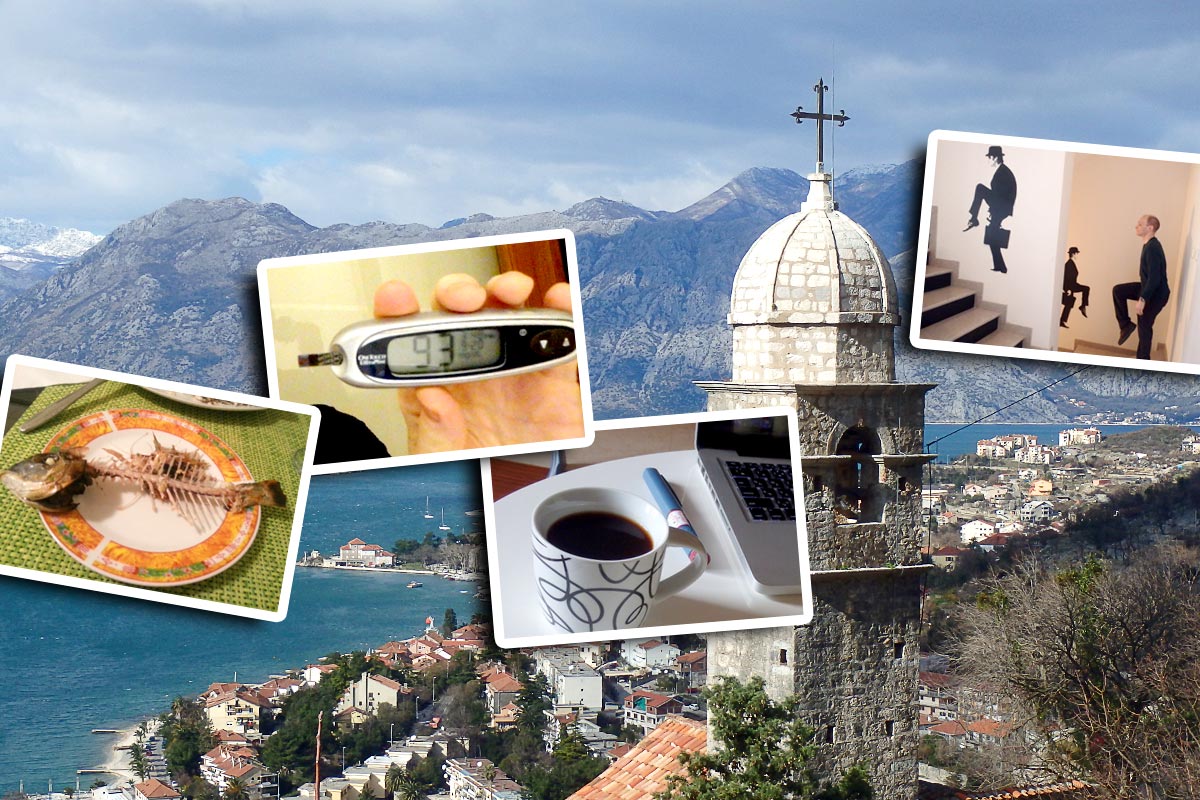
Heading to Montenegro as a diabetic? Great!
Diabetics can visit the small and utterly beautiful country of Montenegro without incident. Handling your diabetes on a trip there can be smooth and present no problem provided you have the right attitude and do a little preparation.
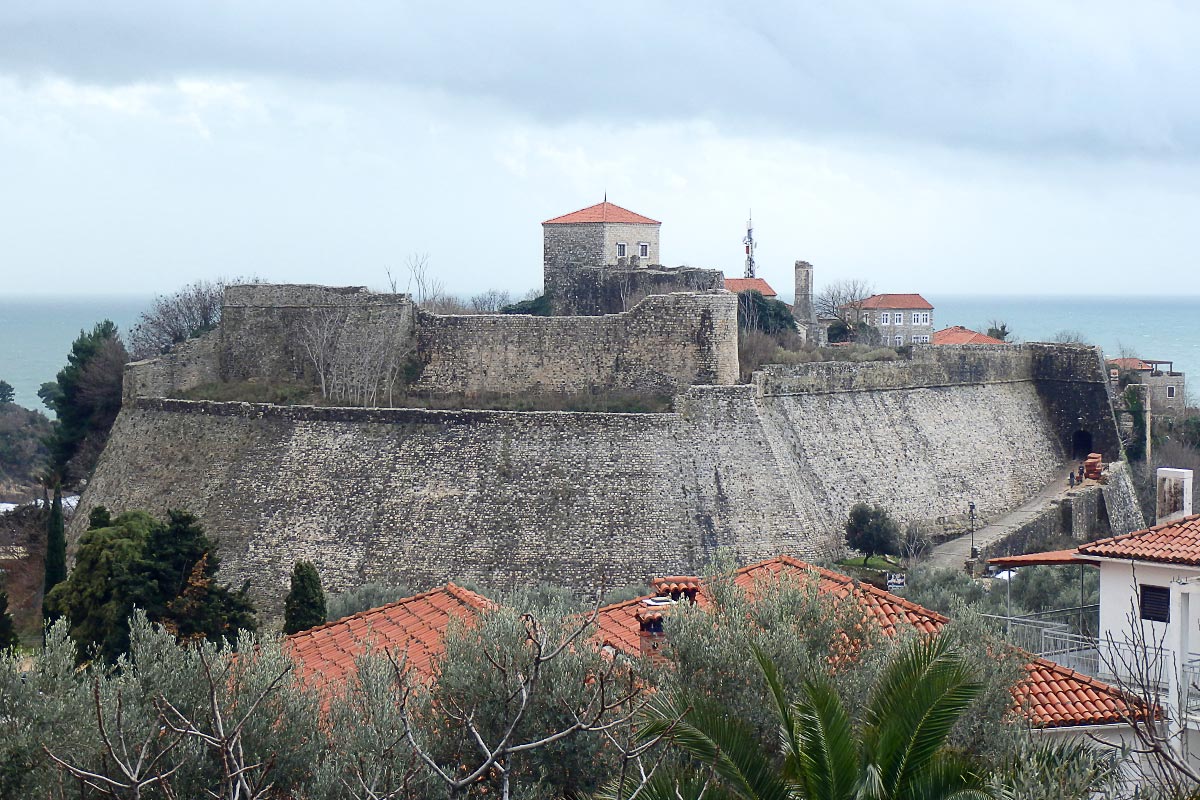
First of all, understand that Montenegro is a modern country, and anything you’ll need will be available. However, it’s always best to understand where you’re going and what the reality is going to be there. This guide can help you.
In this guide to visiting Montenegro with diabetes, you’ll find:
- Tips for handling insulin and food in Montenegro
- What facilities you can expect while traveling around Montenegro
- Info about speaking to people in Montenegro about diabetes
- Details of my own blood sugar experiences in Montenegro as a Type 1 diabetic
- Photos to inspire you to choose Montenegro as your nest destination
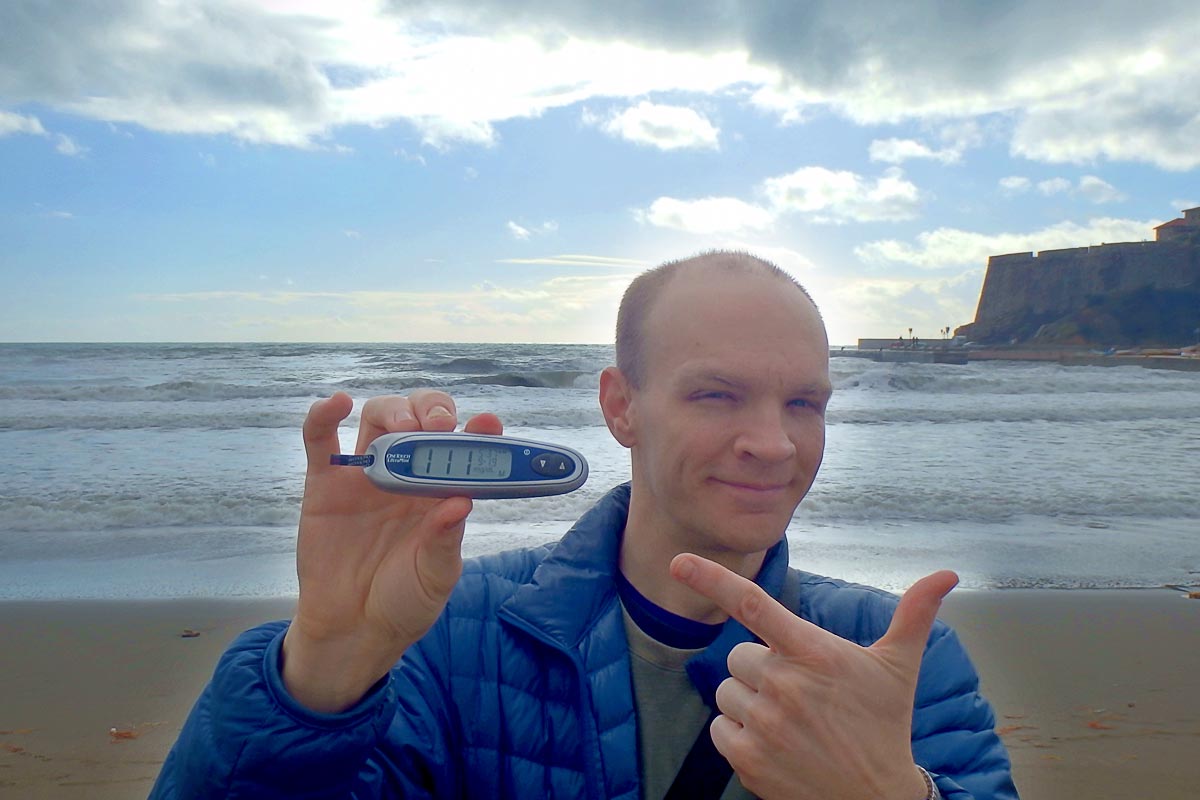
Montenegro: A brief overview for the diabetic traveler
Montenegro – called Crna Gora in the local language (written Црна Гора, pronounced “tsir na go ra”) – means “black mountain”, and Montenegro is indeed mountainous. It’s on the Adriatic Sea coast, and borders Croatia, Serbia and Kosovo, and Albania. To get around the country you’ll probably be taking highway buses or minibuses, though taxis can also be useful.
Seafood is popular along the coast, with regular Balkan foods such as potatoes and meat common as well. Pharmacies exist but may be better stocked in larger towns; however, even in small places they should be able to order supplies for you.
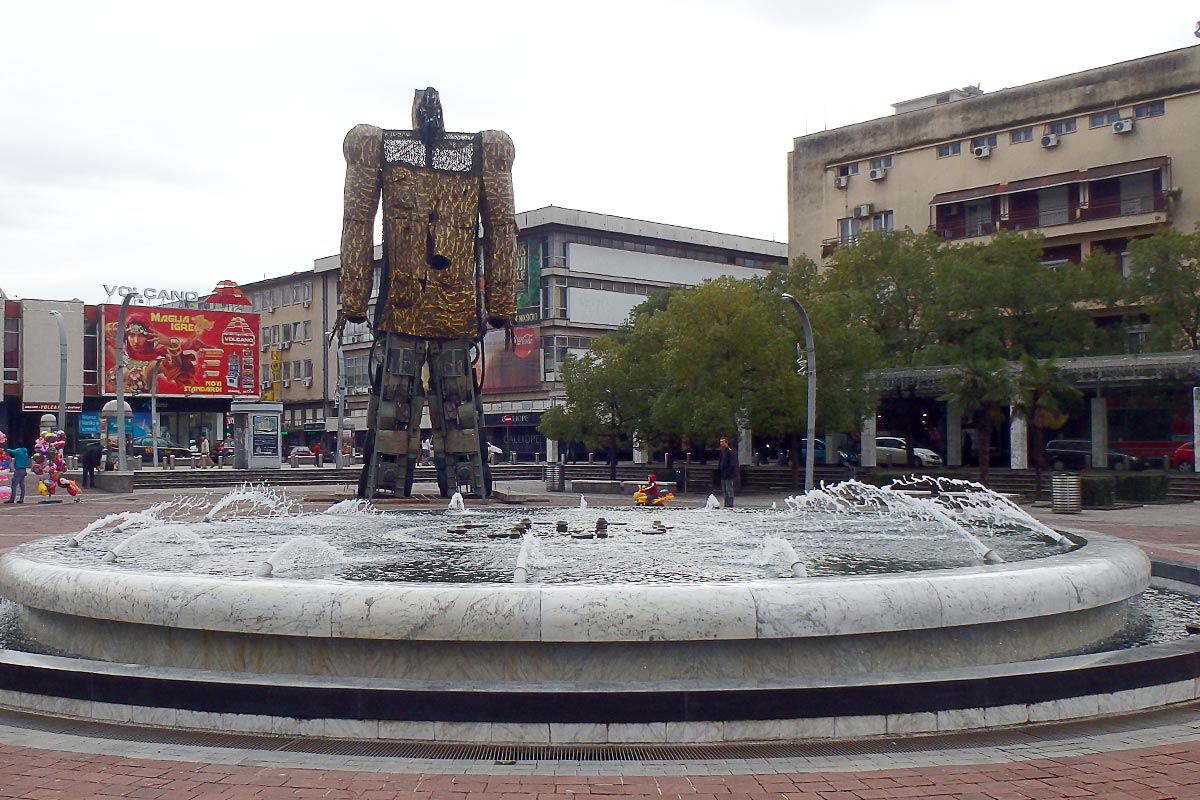
If you are going hiking or mountain trekking you’ll need food, and possibly a way to keep insulin cool. Stock up on plenty of low blood sugar snacks before setting off on a hike. This goes for bus rides too: don’t count on making a stop at the right time for you to buy something to eat or drink.
Tourists frequent Montenegro, the coast especially, and locals are used to dealing with medical issues. Don’t be afraid of going anywhere in Montenegro – you’ll be fine.
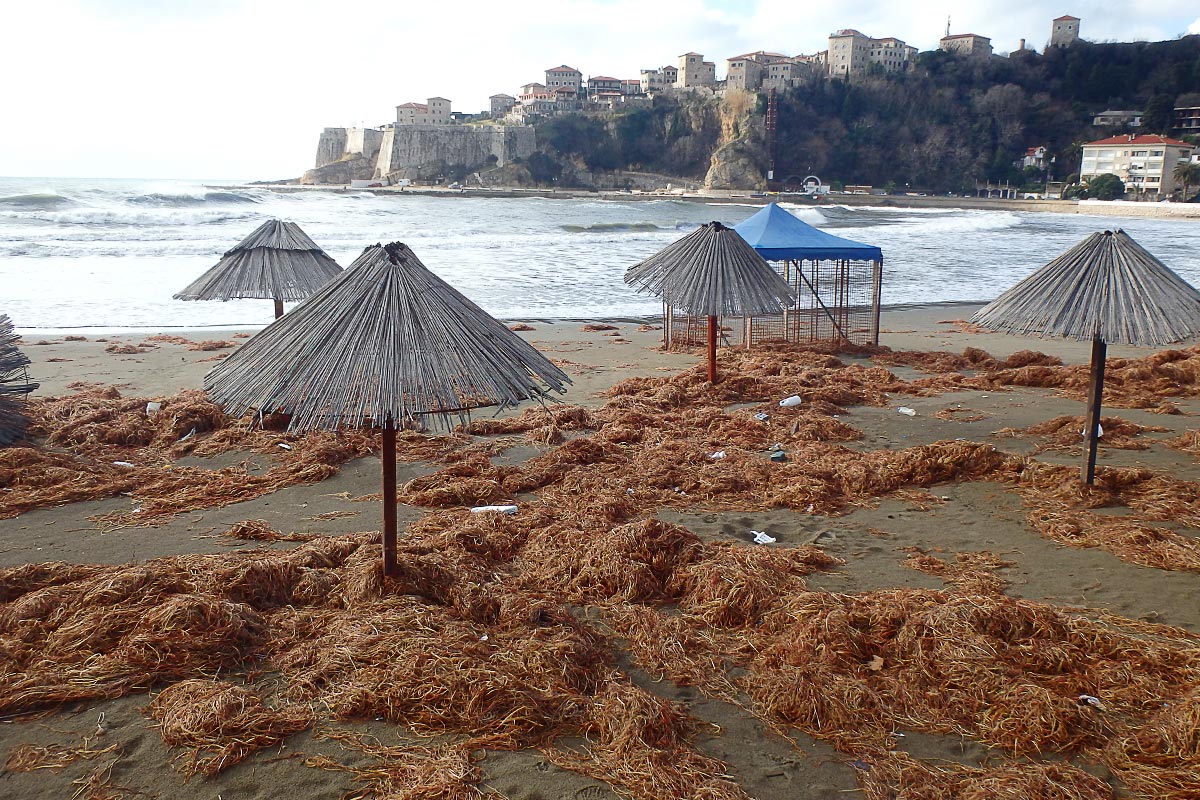
How to speak Montenegrin – for T1Ds
The phrase “diabetes mellitus” in Montenegro is шећерна болест (pronounced “sheh chair na ball est”), but equally as common is дијабетес (like the English word “diabetes” and pronounced “dee ya beh tess”).
If you have to speak to a doctor or pharmacist about diabetes in Montenegro, relax. Just use the English word “diabetes” or the similar word above; they’ll understand. If there’s a problem for some reason just show your blood sugar meter or insulin supply or something. There will be no problem.
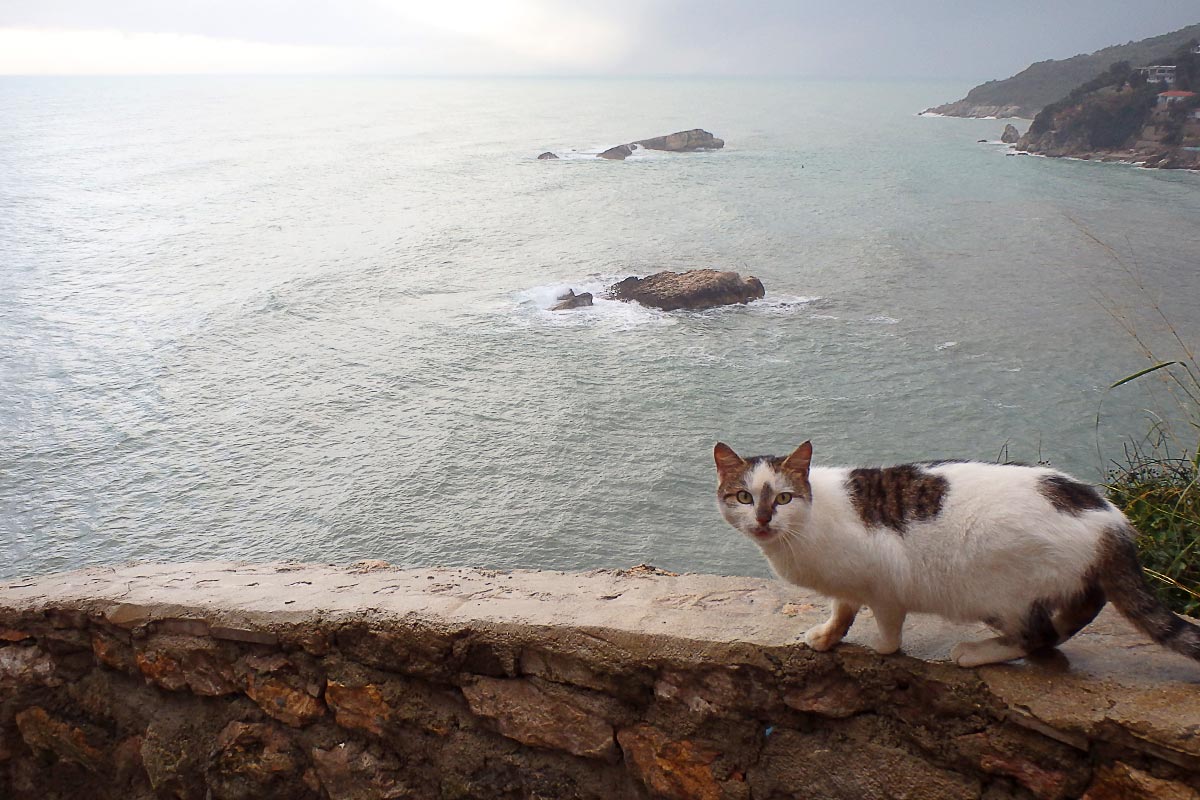
It is a good idea, however, to wear a necklace or bracelet, or even to carry a card in your pocket, that identifies you as a diabetic. It is highly unlikely that you will have to speak to anyone about diabetes, and certainly unlikely that you’ll be in some emergency situation where a medical alert necklace would come in handy. But it’s nice peace of mind to have it anyway.
Food and insulin in Montenegro
The food you eat as a diabetic traveler to Montenegro will probably take on different forms. This list is merely an example of the types of things you’re like to come into contact with, along with some tips about insulin doses.
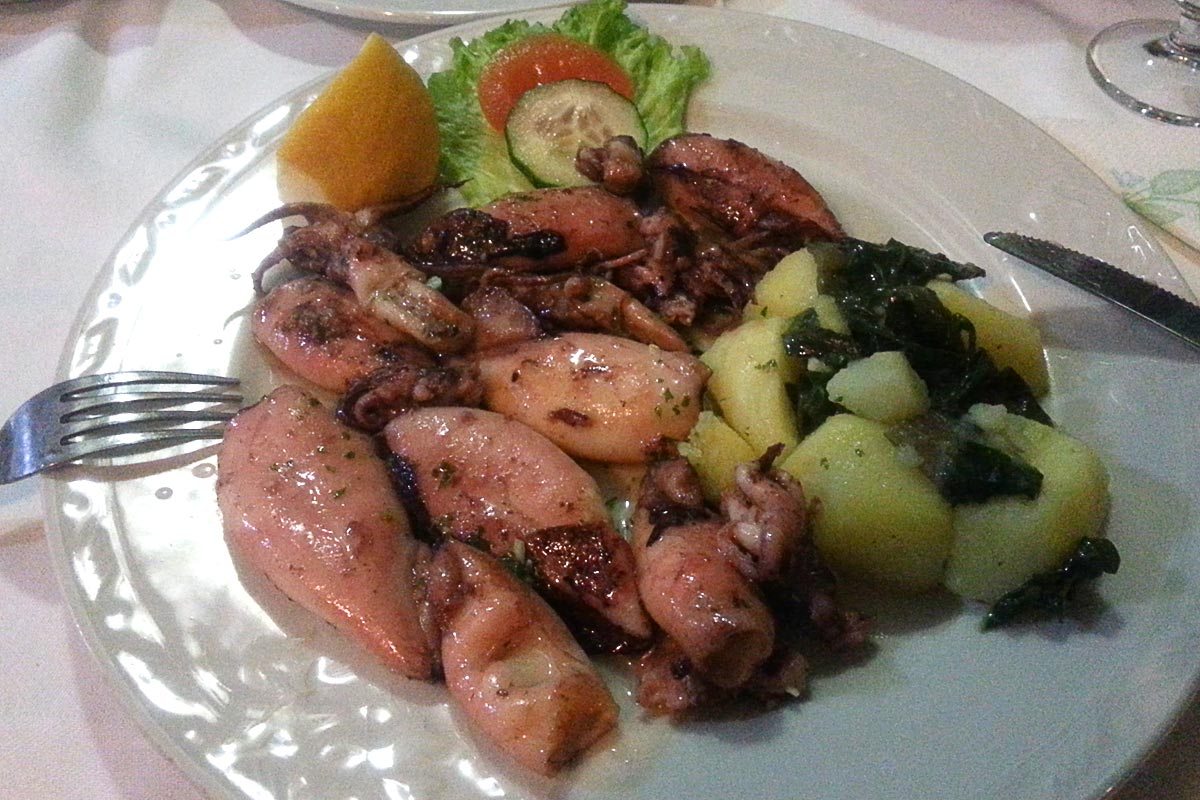
- Seafood – Especially on the coast, fresh seafood is excellent and common. It’s often served with potatoes, and also crispy fried bread and vegetables. As usual, the seafood itself won’t be too high in carbs but the potatoes and, to a lesser degree, the flat bread will. If you’ve been exercising (walking) a lot, take that into account, but note that potatoes and sauces can cause high blood sugar.
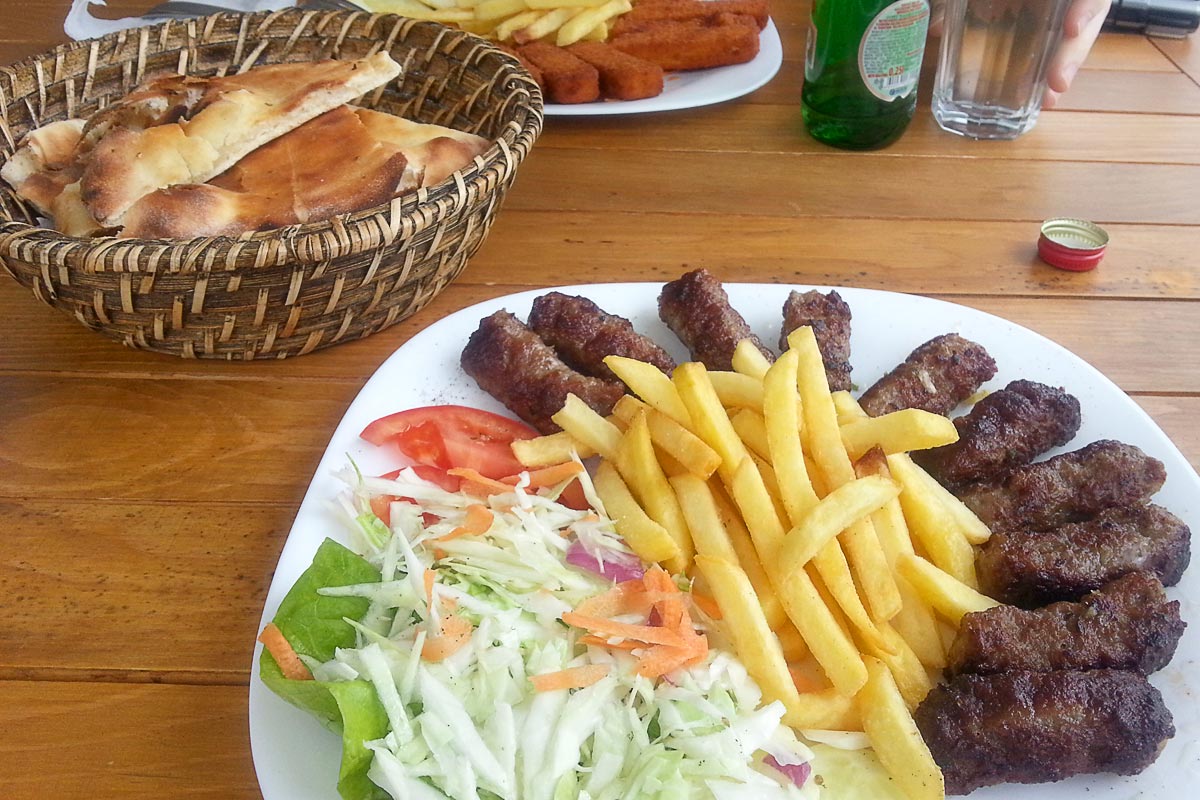
- Southern European food – Dishes like ćevapčići (sausages), burek (fried bread with meat filling topped with yogurt), and baklava that are common in Serbia, Bosnia, Croatia, and other southern European countries are just as easy to find in Montenegro. Meats may have thickeners in them that make them higher in carbs than expected, but overall there shouldn’t be too many surprises. As usual, the devil is in the side dishes: the potatoes or bread. Make your best guess, check soon afterwards, and learn from the reading.
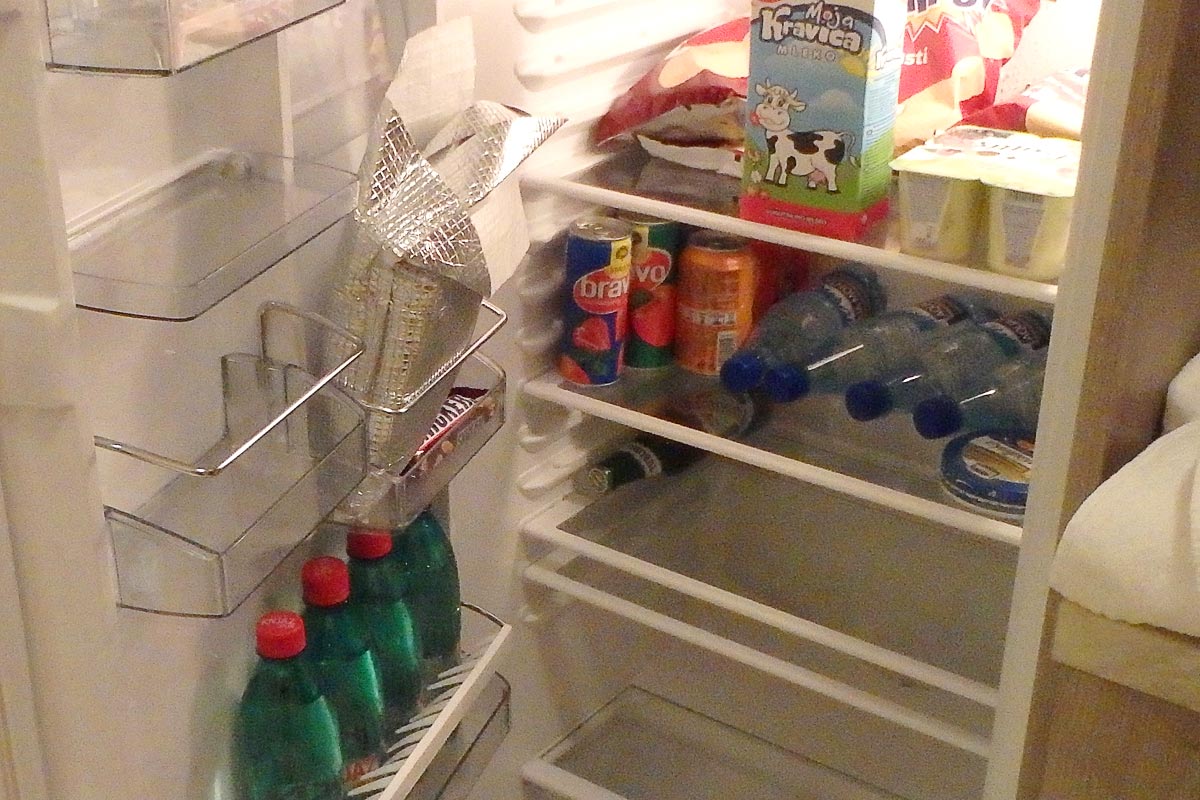
Refrigerator in Podgorica with minibar snacks. Insulin in the foil bag in the door.
- Snack food – Sandwiches for your bus trip, or a bag of chips for a stroll around town, are everywhere. Kiosks and small grocery stores may be found in the most obscure part of even small towns. You should familiarize yourself with where they are, of course; if you are looking for something it’s no good wandering around. Many foods in packages have carb info on them, but things like sandwiches may not.
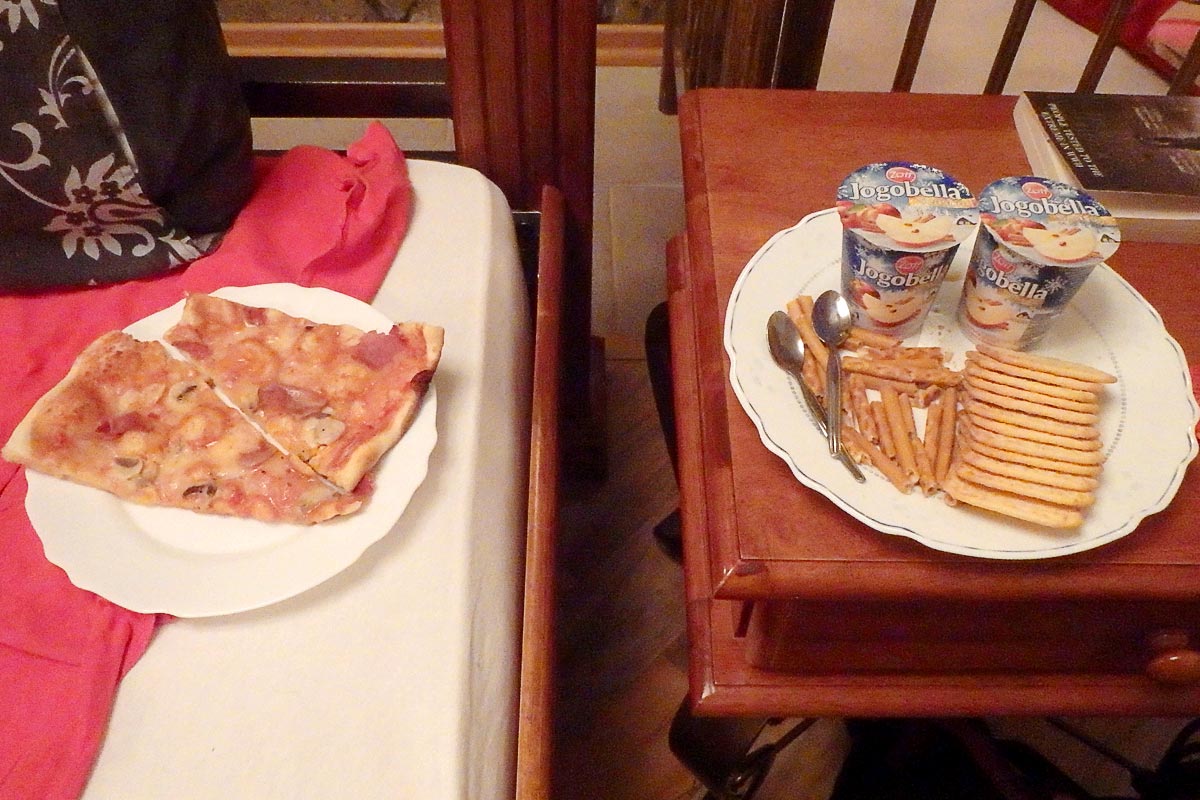
- Pizza and fast food – You may find the occasional pizza place – Montenegro is just across from Italy, after all – and there will be slices you can buy at bakeries as well. This can actually make up a dinner if you are tired of restaurants and just want a simple meal in your room. The crust can be very thick though; use your best judgement but don’t be afraid to calculate a higher dose. Just check afterwards.
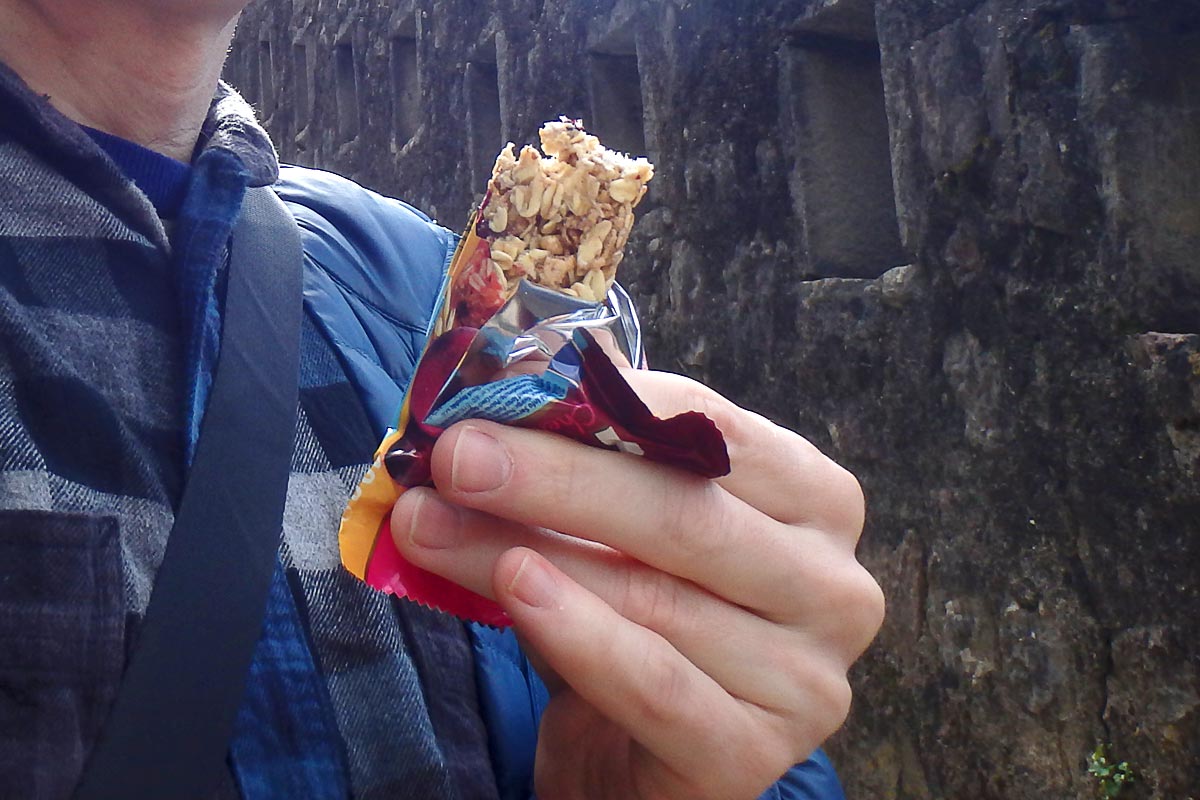
- Low blood sugar snacks – ALWAYS carry low blood sugar snacks with you, no matter where you are or what you’re doing. Never leave your room without them. They can be found at the same small groceries or stalls you find any junk food at, but since you can’t always rely on such a vendor being right around the corner, always stock up with a little more than you’ll need. Juice, chocolate bars, cookies, and others are available and easy to carry.
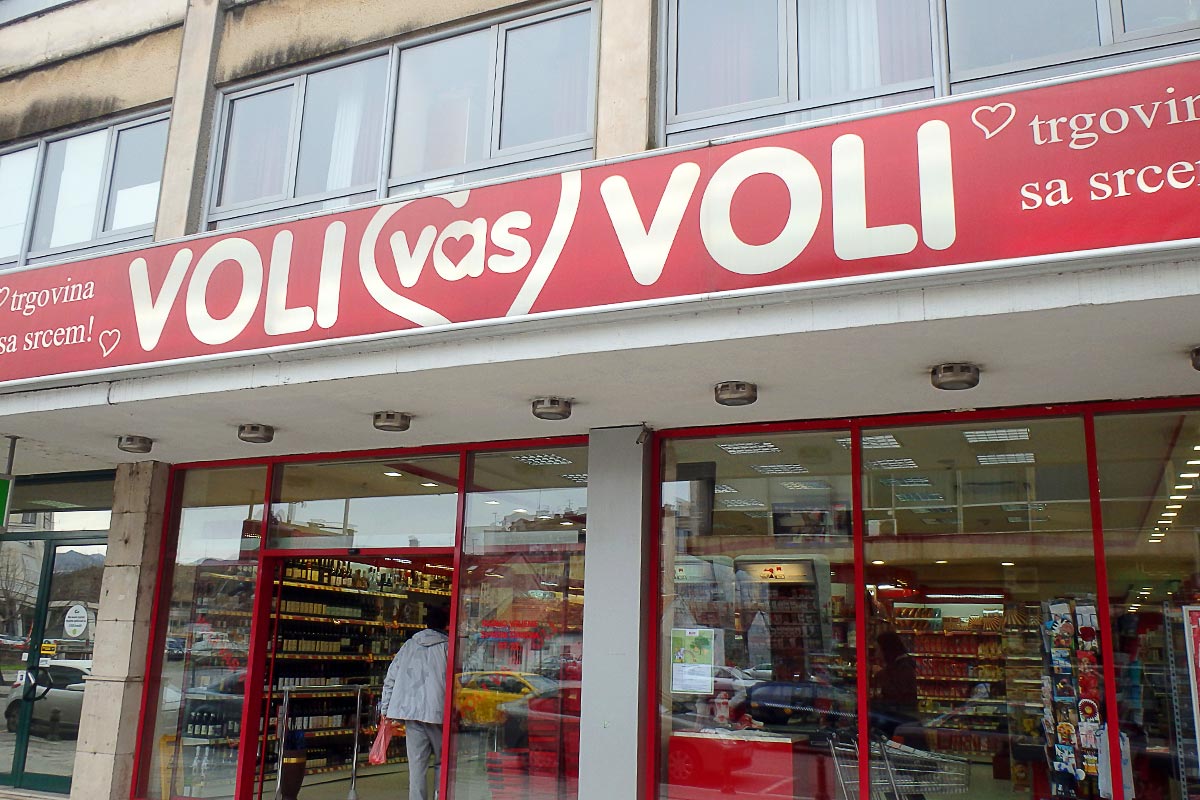
Supermarket in Podgorica.
- Supermarkets – If your room has its own kitchen (and many guesthouses in Montenegro do) you can try cooking for yourself if there’s a supermarket nearby. Depending on how fancy you want to get you can have rice and beans, or fresh seafood with pasta, et cetera. Some markets are small and the selection will be limited, but large supermarkets with everything are around too, particularly in bigger towns.
The most important attitude to have when eating in Montenegro as a diabetic is: eat what you want! Don’t let diabetes dictate everything.
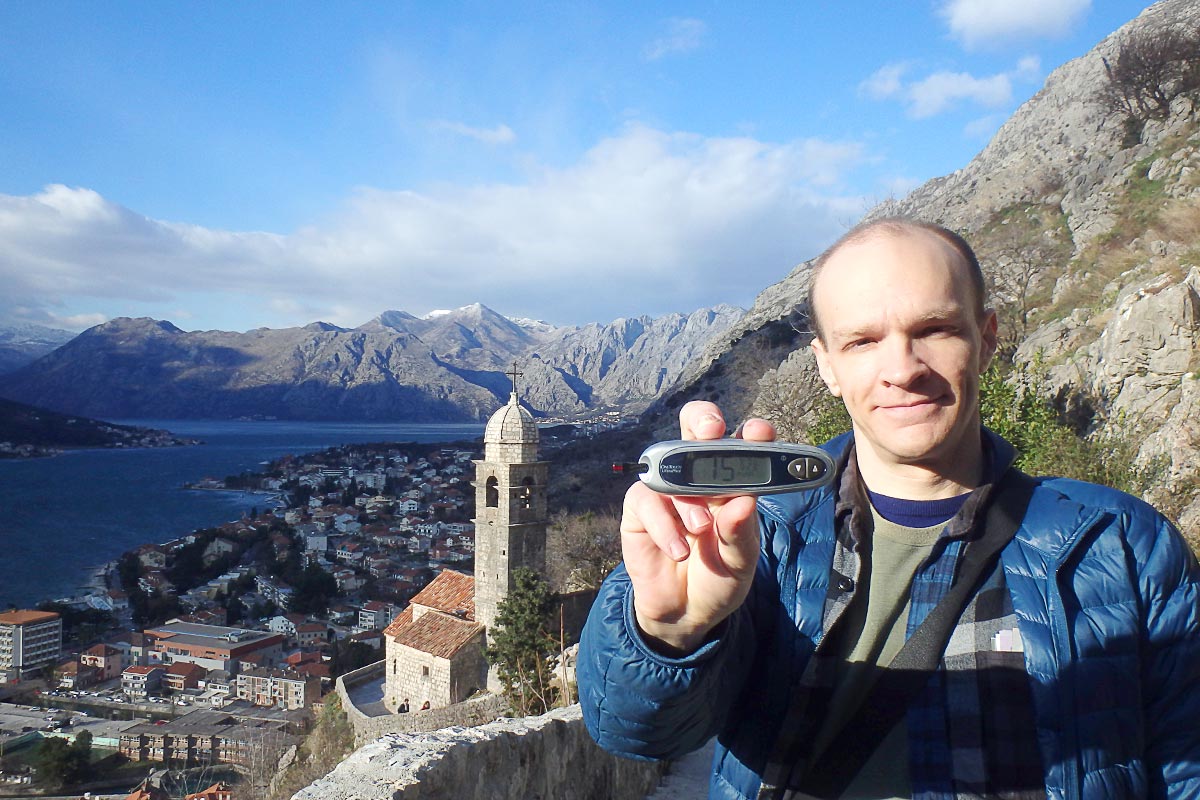
The most important thing to do when eating in Montenegro as a diabetic is to check your blood sugar frequently. After you’ve made your best guess with your insulin, don’t worry. Enjoy the meal. Then check soon afterwards, maybe a couple times. Just see what happened and try to learn from it.
The more you try, the closer you get to being able to handle any food and end up with a good BG. Don’t get discouraged if you have a bad run. It happens. Just keep enjoying your food and adjusting the best you can. Hey, you’re still traveling in Montenegro, life’s pretty excellent!
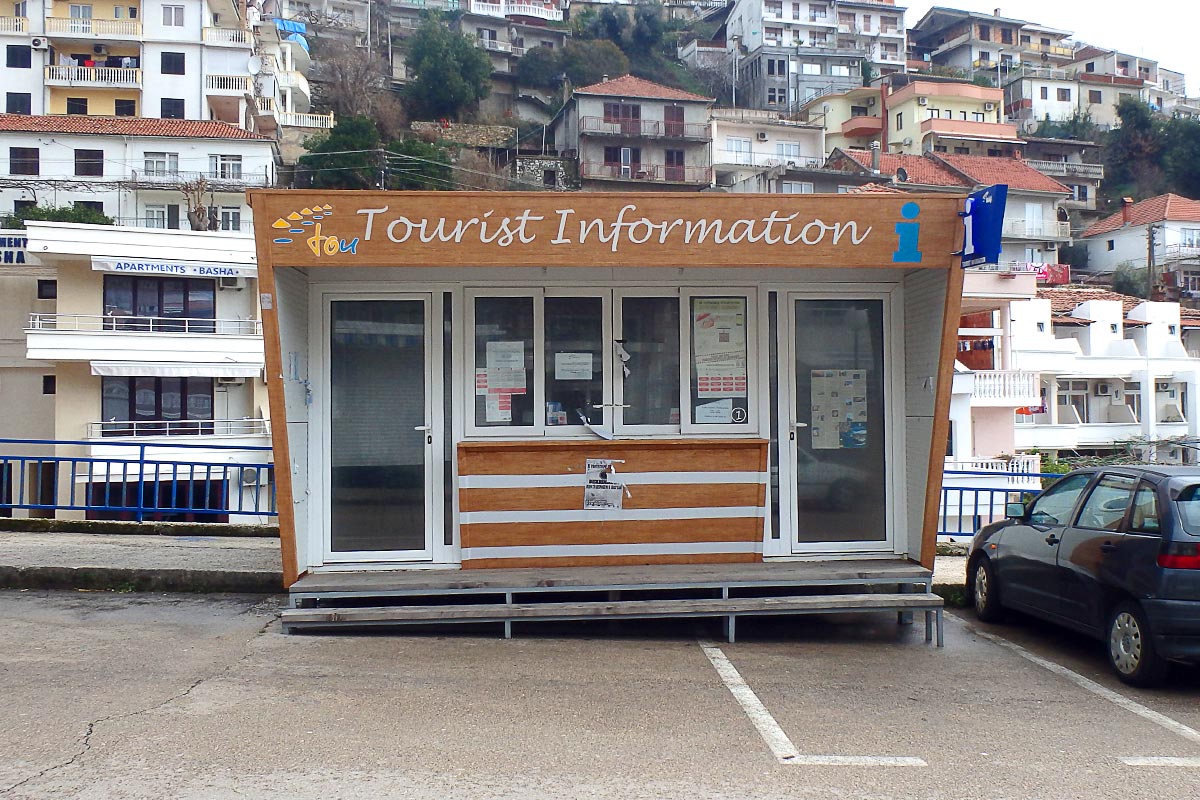
Taking insulin in public
You can take insulin at your restaurant table or on a bus if technically possible – a pen injected into the stomach is particularly good for this. People won’t notice if you’re careful about it. I personally injected into my legs right through my pants while in Montenegro, in coffee shops, on buses, in restaurants, wherever. No problem. Of course you can go to the bathroom to do it too. Just be sure that your food will be there when you expect it.
All of this goes for blood sugar checks too.
(See my Full review of Bluff Works travel pants.)
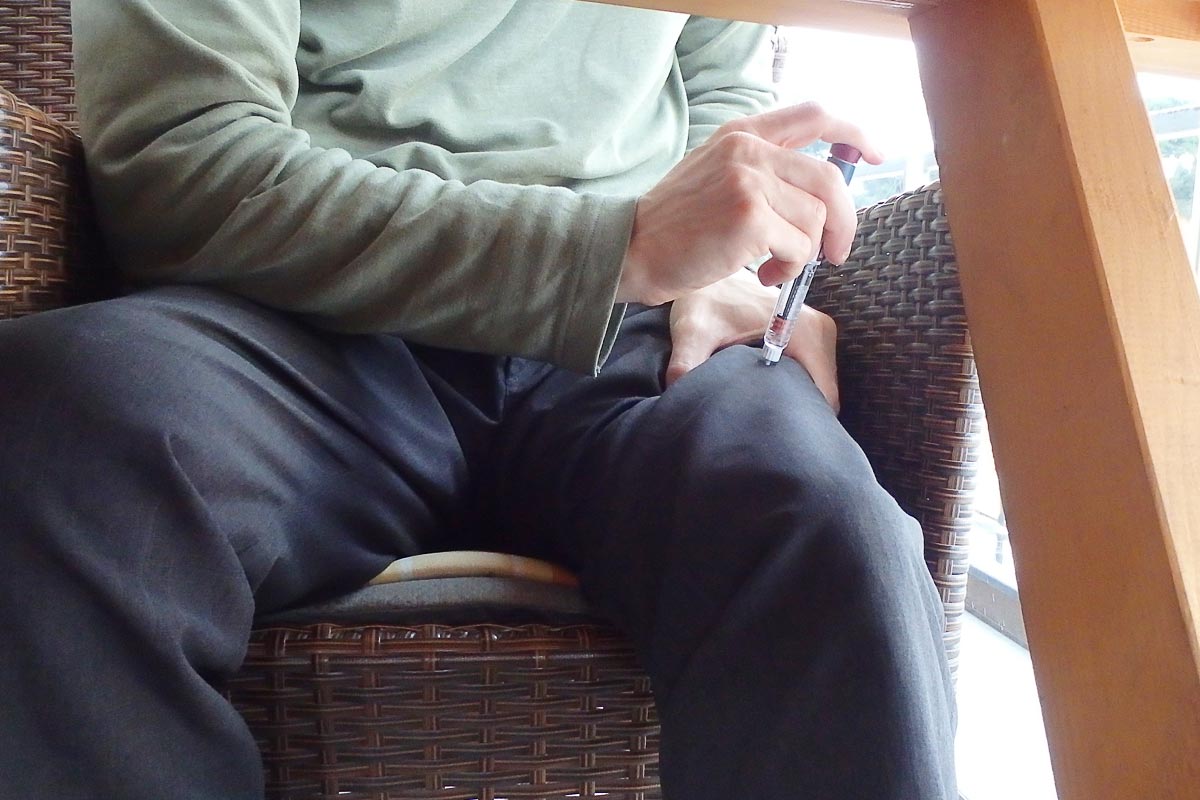
And nobody was any the wiser.
My diabetes experiences in Montenegro
As a Type 1 diabetic, I spent some time in Montenegro as part of a long trip through Europe. I ate the food I wanted and kept track of every blood sugar. Your control may be better (or worse) than mine, but this data can give you an idea of the sorts of things that may be in store for you. If nothing else, it can give you some numbers to try to beat!
My route in Montenegro
First, where I went: with my travel partner Masayo (not a diabetic, but still a nice person) I crossed the Albanian border by bus and spent some time in a hilltop guesthouse in Ulcinj on the Adriatic Sea coast. It was off-season and chilly, and all the amenities were a 20-minute walk down and then back up a steep hill. Still, the views were unbelievable and diminutive Ulcinj is crammed with great beauty and gorgeous historical sites.
A larger highway bus took us to the capital city of Podgorica, a very comfortable if unexciting place with a decided small-town feel. We walked around the affable town, tried some interesting foods, and relaxed in one of the nicest rooms we rented in our entire time in Europe.
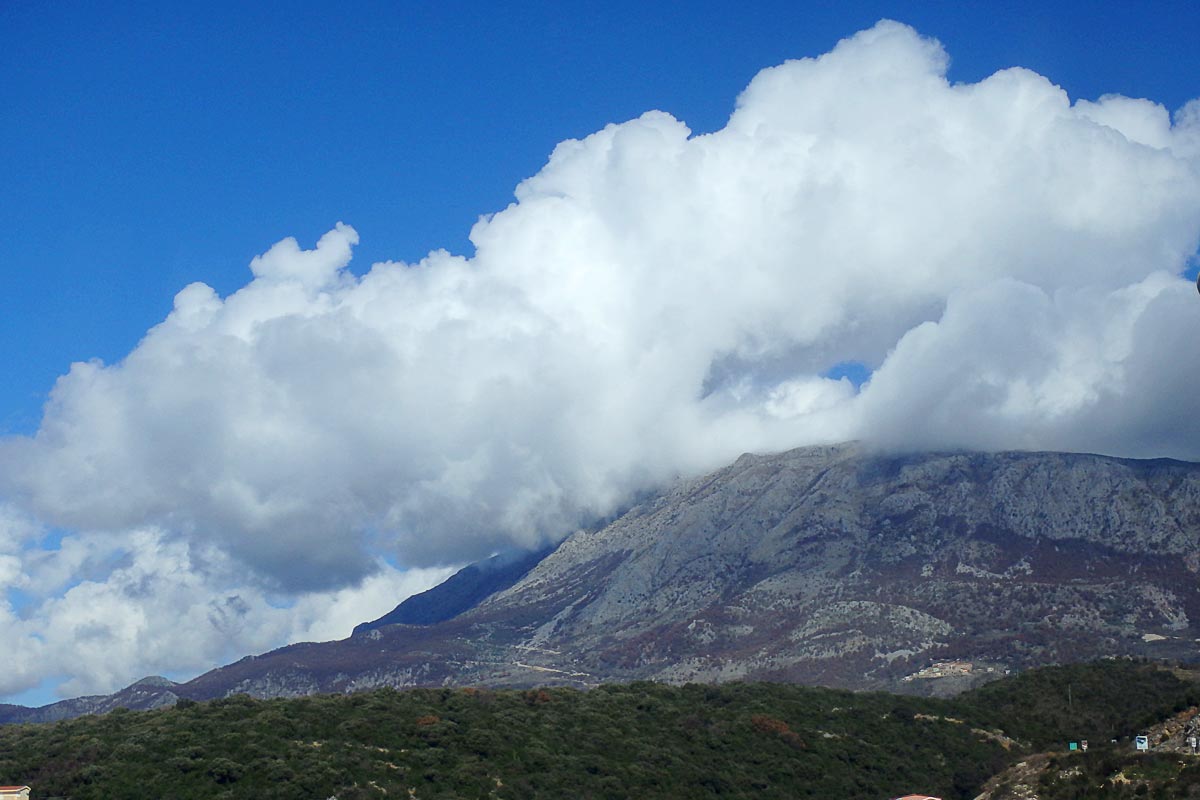
After Podgorica we headed to the town and bay of Kotor, a UNESCO World Heritage Site with a mesmerizing Old Town and a steep hike around the hills to an ancient fortress. The view of the Bay of Kotor from the fortress was an image I’d seen on the internet for years; it was great to be there in person. (I had plenty of low blood sugar snack on this hike, and I needed it too.)
After Kotor we went by bus out of Montenegro to the legendary city of Dubrovnik, Croatia.
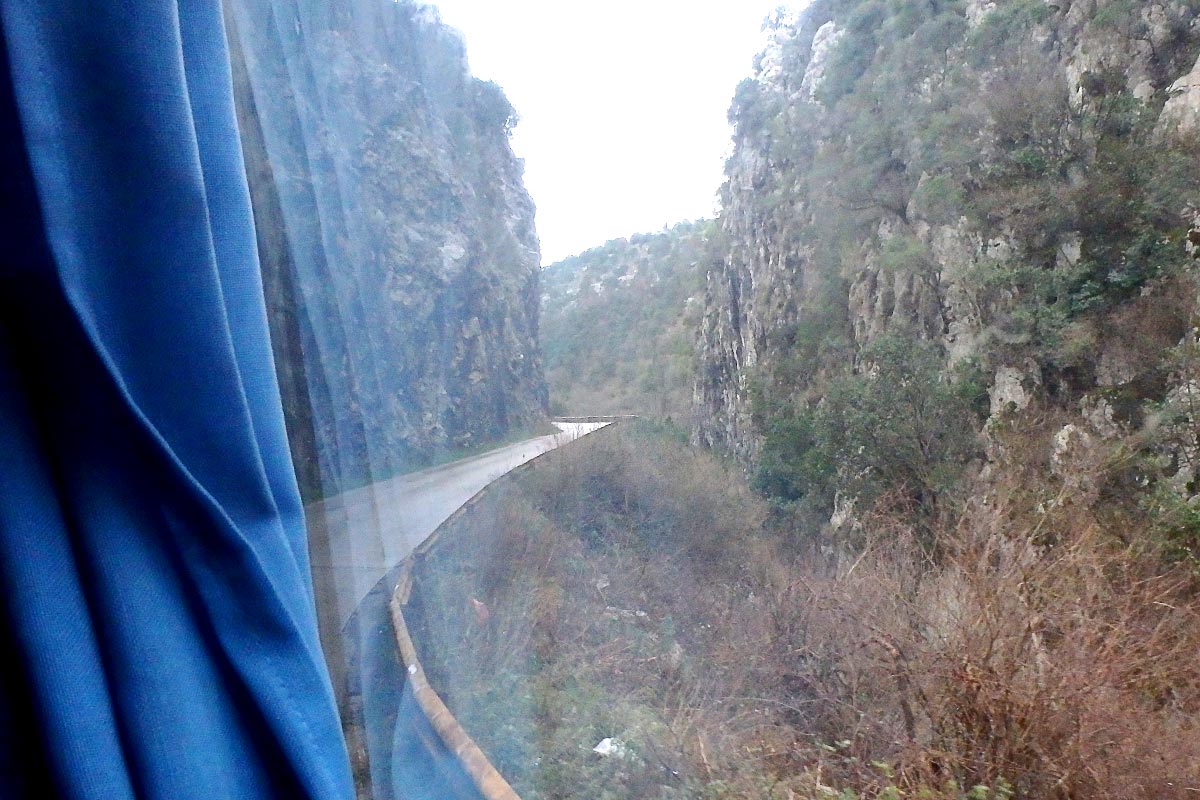
My diabetes/blood sugar experiences in Montenegro
- Total number of BG checks: 35
- Average BG: 177
- Lowest BG: 57
- Highest BG: 324
- Average morning BGs (~12:00): 183
- Average afternoon BGs (12:00~6:00): 166
- Average evening BGs (6:00~): 184
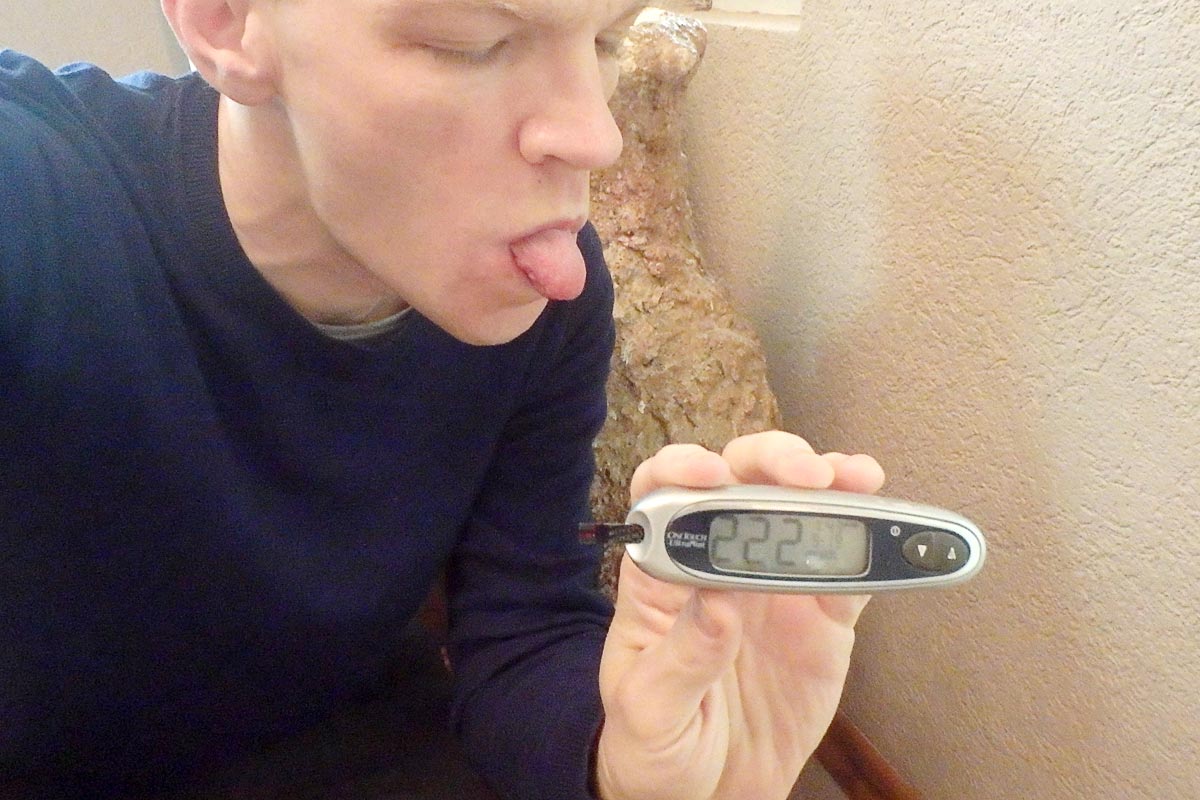
These numbers aren’t perfect, but they are a marked improvement over some of my recent weeks. And there are quite a few bright spots (which traveling diabetics must be able to identify!):
- Only one reading was over 300.
- There were many instances of rice and wine meals with great blood sugars afterwards, not reflected in the averages.
- After-dinner spikes were much rarer. 177 isn’t a great average, but the consistency across the times of day was a good sign.
Mostly what made my readings high was bready things: burek, thick pizza, a sandwich on a bus. And most of those came at times of inactivity, like sitting in a minibus or whiling away a morning beside the Bay of Kotor working online.
Check your own BGs often and beat my averages!
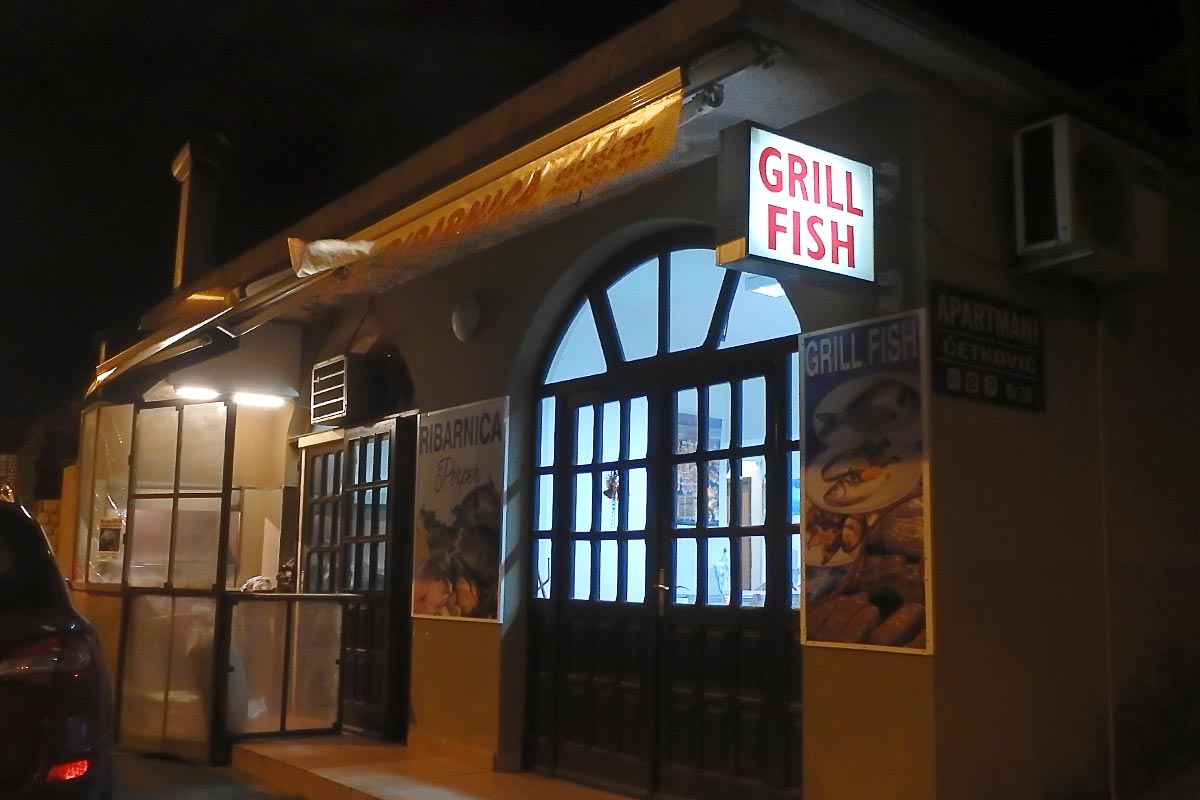
Your trip to Montenegro
If you have been to Montenegro (whether or not as a diabetic) I’d like to hear about your own experiences there.
If you are planning such a trip or are considering one, let me know if you have any questions or follow-up comments. And always remember to travel without fear.
You can go anywhere with diabetes!
Read more about my travels in Montenegro
Come along on the adventure! Follow detailed travelogues about the wondrous sights, fascinating people, and varied diabetes experiences I encountered as a traveling T1D in Montenegro:
Day 112: Fun Bus Ride On Small Roads To Ulcinj, Montenegro
Day 113: All Day On A Hilltop With A View In Ulcinj, Montenegro
Day 114: Exploring Ulcinj, Montenegro's Very Own "Riviera"
Day 115: First Impressions After Arriving In Podgorica, Montenegro
Day 116: Walking Around Podgorica, Montenegro And Its Bizarre Transformer Figures
Day 117: Bus Through The Montenegro Hills To The Hidden Gem Kotor
Day 118: Climbing Up Kotor Fortress For Montenegro's Most Famous View
Day 119: Strolling The Stunning Alleys Of Old Town Kotor, Montenegro
Day 120: Jewel To Jewel: Bus From Kotor To Dubrovnik, Croatia
Thanks for reading. Suggested:
- Share:
- Read next: Tips for traveling to Norway with diabetes
- News: Newsletter (posted for free on Patreon every week)
- Support: Patreon (watch extended, ad-free videos and get other perks)

Support independent travel content
You can support my work via Patreon. Get early links to new videos, shout-outs in my videos, and other perks for as little as $1/month.
Your support helps me make more videos and bring you travels from interesting and lesser-known places. Join us! See details, perks, and support tiers at patreon.com/t1dwanderer. Thanks!

love the cat pic 🙂
I thought you might like that! Nice place to be a cat, isn’t it?